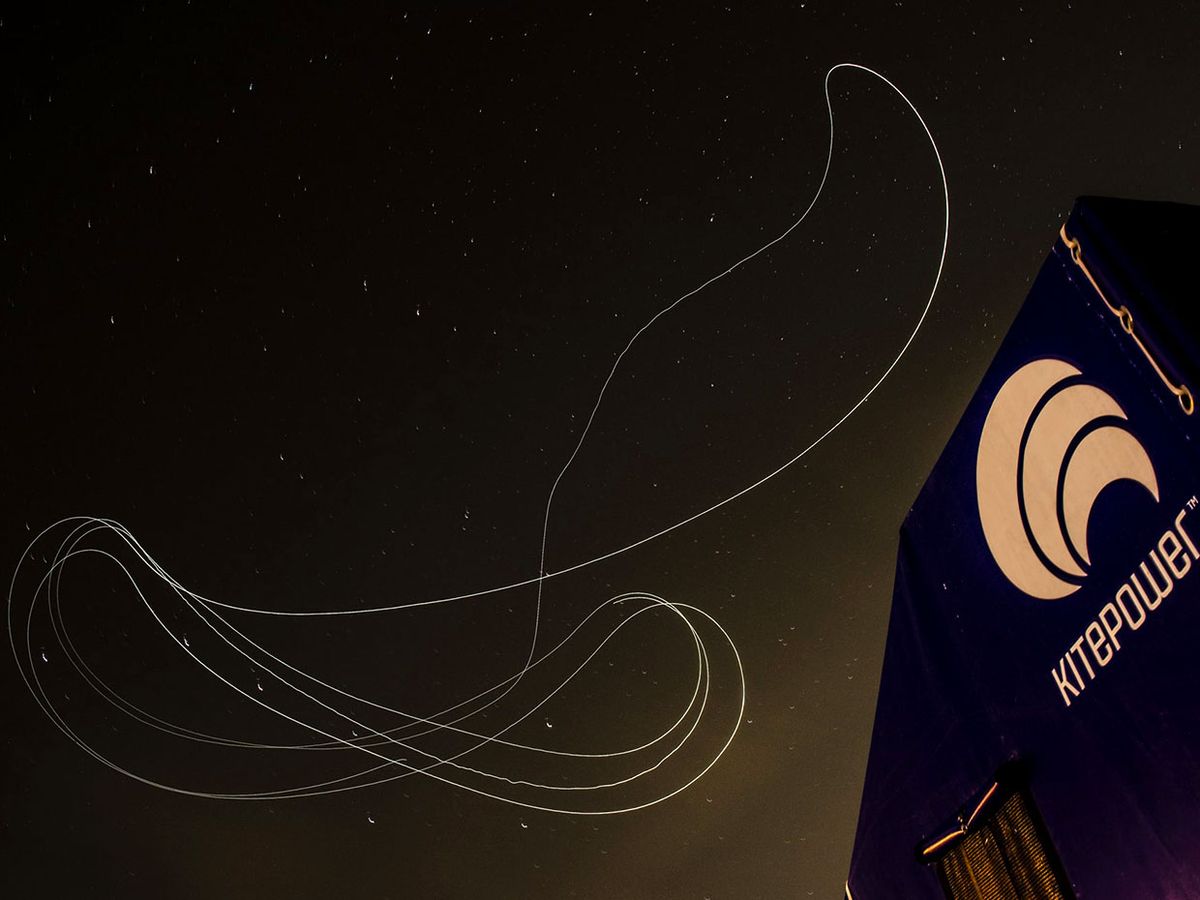By some estimates, persistent winds a half kilometer or more up in the air represent 1800 terawatts of near-nonstop, 100-percent renewable power that’s available day and night and in most weather conditions. The planet’s total electric power usage, by contrast, is some 18 terawatts, making it at least theoretically possible to extract all the power that the world needs without much disturbance of the Earth’s winds or climate.
Those numbers lend some significance to the recent unveiling of an open-source library of airborne wind energy (AWE) simulation software. It’s challenging but not impossible, engineers now believe, to design an AWE system that sits at the balance point between being scalable for megawatt-sized AWE farms and being affordable and straightforward to deploy.
This year, Alphabet’s “moonshot” AWE spinoff company Makani announced its partnership with Royal Dutch Shell to explore AWE in offshore locations. And judging from attendance at the most recent AWE conference in 2017, another 200 or so research teams are currently tackling the problem in startup companies and universities in the Americas, Europe, Asia and Australia.
“The big issue right now in airborne wind energy is scaling,” says Roland Schmehl, associate professor of aerospace engineering at the Delft University of Technology in the Netherlands. “The [AWE] development cycle is extremely long, because the technology is very complex. That’s one of the reasons you want this software. It allows us in the virtual realm to explore design options and other parameters.”
So Schmehl and lead author Gonzalo Sánchez-Arriaga, of the Universidad Carlos III de Madrid, in Spain, have spearheaded the release of an open-source software package dubbed Lagrangian Kite Simulators (LaKSa). (They and two other co-authors describe this work in an upcoming issue of the journal Applied Mathematical Modeling.) LaKSa was funded by the Spanish Ministry of Economy and Competitiveness, says Sanchez-Arriaga.
“AWE systems need to operate autonomously in a broad range of varying conditions,” says Sánchez-Arriaga via email. “Therefore, LaKSa is a software package that can be used to study a broad range of systems… The simulator is user-friendly and offers a unique balance between fidelity and computational cost. For that reason, we think that it can be useful for researchers and companies that could study the dynamics and control problems for a broad variety of system configurations.”
As an example, Schmehl’s group has used LaKSa code to optimize test kites (the kind with inflatable membrane wings like kite surfers use) that are connected via bridle lines and tether to a winch on the ground. As a flying kite pulls on the winch, the tension generates electricity on the ground. Then when it begins to run out of tether, the system draws the kite back in so that it can harness the wind to pull it back out again.
LaKSa enables his team to test different configurations without the time, expense, and logistical challenges involved in physically flying them. “For example we can mount larger or smaller kites,” Schmehl says. “We can fly lower or higher. And this tool provides the physical model to fit your system perfectly to a certain location and wind profile. Embedding a tool like LaKSa in an optimization framework, we can identify the optimum kite size with the perfect minimum and maximum tether length with the perfect elevation angle of the tether when we fly out doing these cross-wind maneuvers.”
Schmehl is co-founder of Kitepower B.V., a startup company based in Delft whose goal, he says, is to develop a 100-kilowatt nominal power AWE system. (According to the company’s website, the group hopes to have its system, boasting peak power of 180 kW, ready by the fourth quarter of 2020.)
“The entire flight path and configuration of that system is derived using these tools,” Schmehl says. “For example, we have a 180-kilowatt electrical generator at the ground station. We fly an 8-millimeter-[thick] tether made of Dyneema, a plastic fiber stronger than steel. We will have something like an 80 square meter kite, with several tons of traction force. This kind of configuration is the result of years of simulation and iterative design cycles.”
The iterative steps in the design and simulation phase, Schmehl says, still require a human engineer to guide the process. He does not think a machine learning or deep learning code could be strapped to these simulators to map out the entire design space and discover optimum configurations and flight paths on their own.
On the other hand, Sánchez-Arriaga adds, “The modules can be seen as black-boxes that just provide the right-hand side of a system of ordinary differential equations. From this perspective, they are perfectly compatible with a broad set of optimization tools and machine learning algorithms.”
Margo Anderson is the news manager at IEEE Spectrum. She has a bachelor’s degree in physics and a master’s degree in astrophysics.



